 Exhibitions Archive
Exhibitions Archive
 Exhibitions Archive
Exhibitions Archive

AZ03. John the Hermit,
Cretan School, early 17th century
Panel: 31 x 24.5 cm; 2cm thickness![hideselects= [On] header =[Convert size] body = [Click here to show the size in inches] Click here to convert metric size to imperial](images/inches.gif)
Condition: remarkably good condition. A condition report including initial technical studies carried out under the direction of Katherine Ara of Katherine Ara Ltd. (www.katherineara.com), London, is available [Click here].
Inscriptions: ΑΓΙΟC ΙΩ Ο ΕΡIΜΙΤΗC (St John the Hermit), Left H ΚΟΙΜΙCIC TOY AGIOY IΩΑΝΝΟΥ ΤΟΥ ΕΡΙΜΙΤΟΥ (The Dormition of St John the Hermit), O ΑΓ ΙΩΑΝΝΗΣ (St John),
Provenance: Boissoneau Daguerre, Paris, 2007. Private Collection Paris
Feast: 29th March

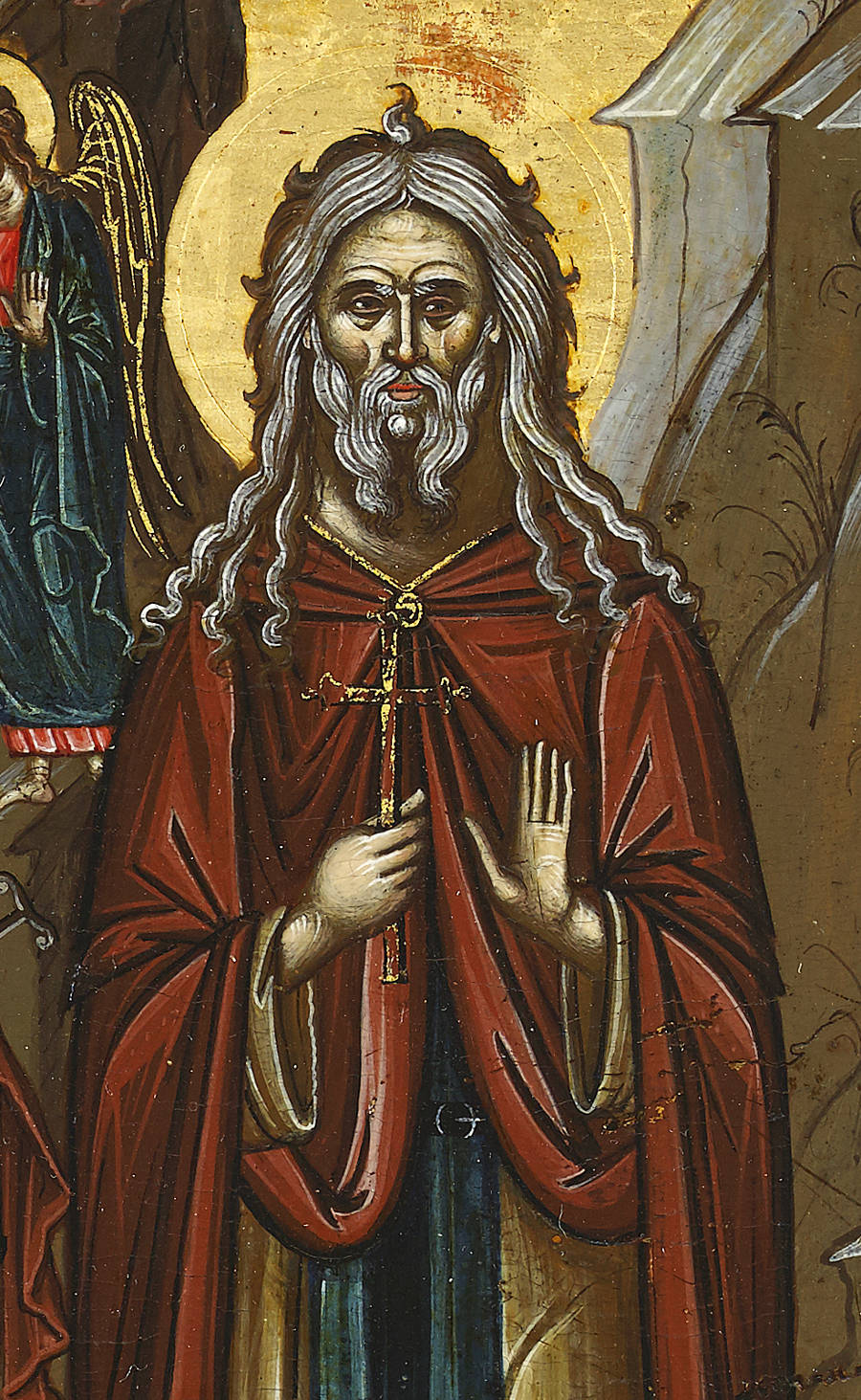
No. 3. Detail
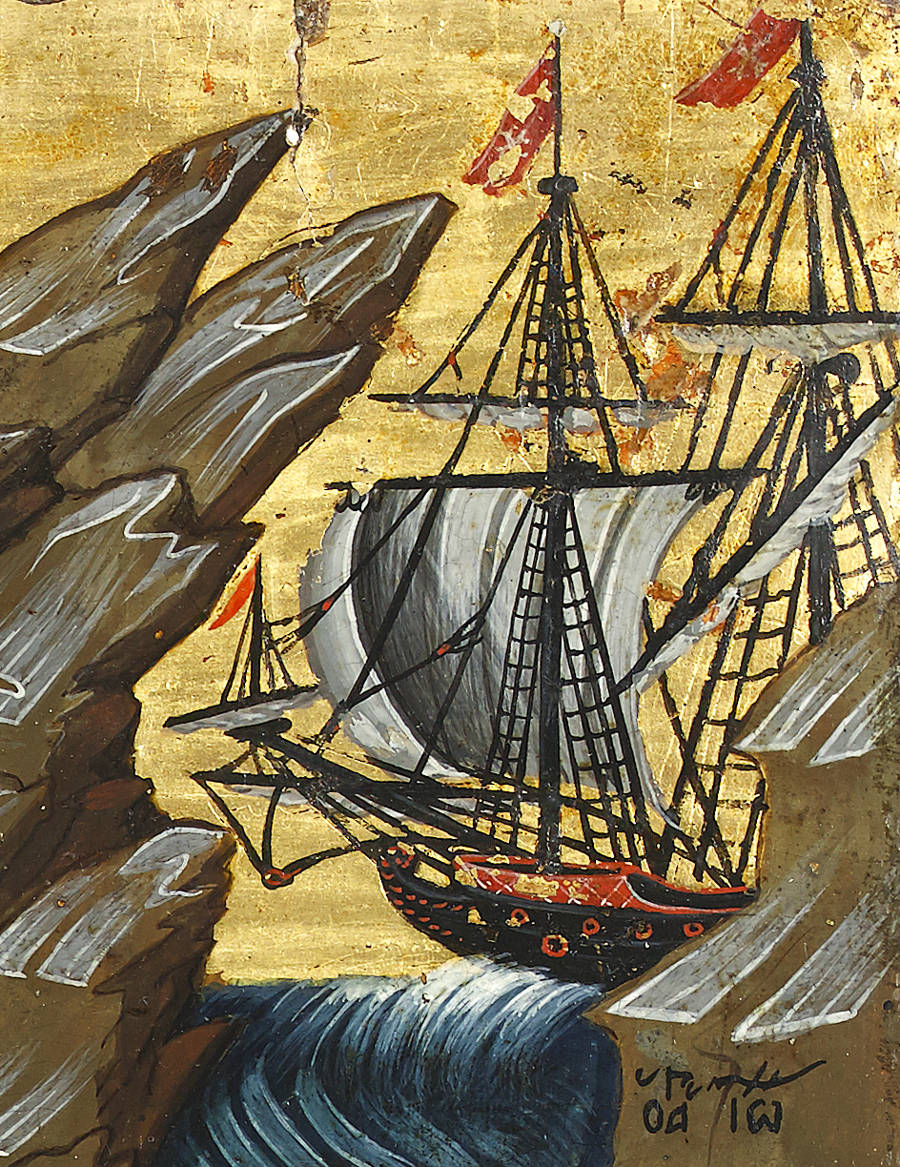
No. 3. Detail
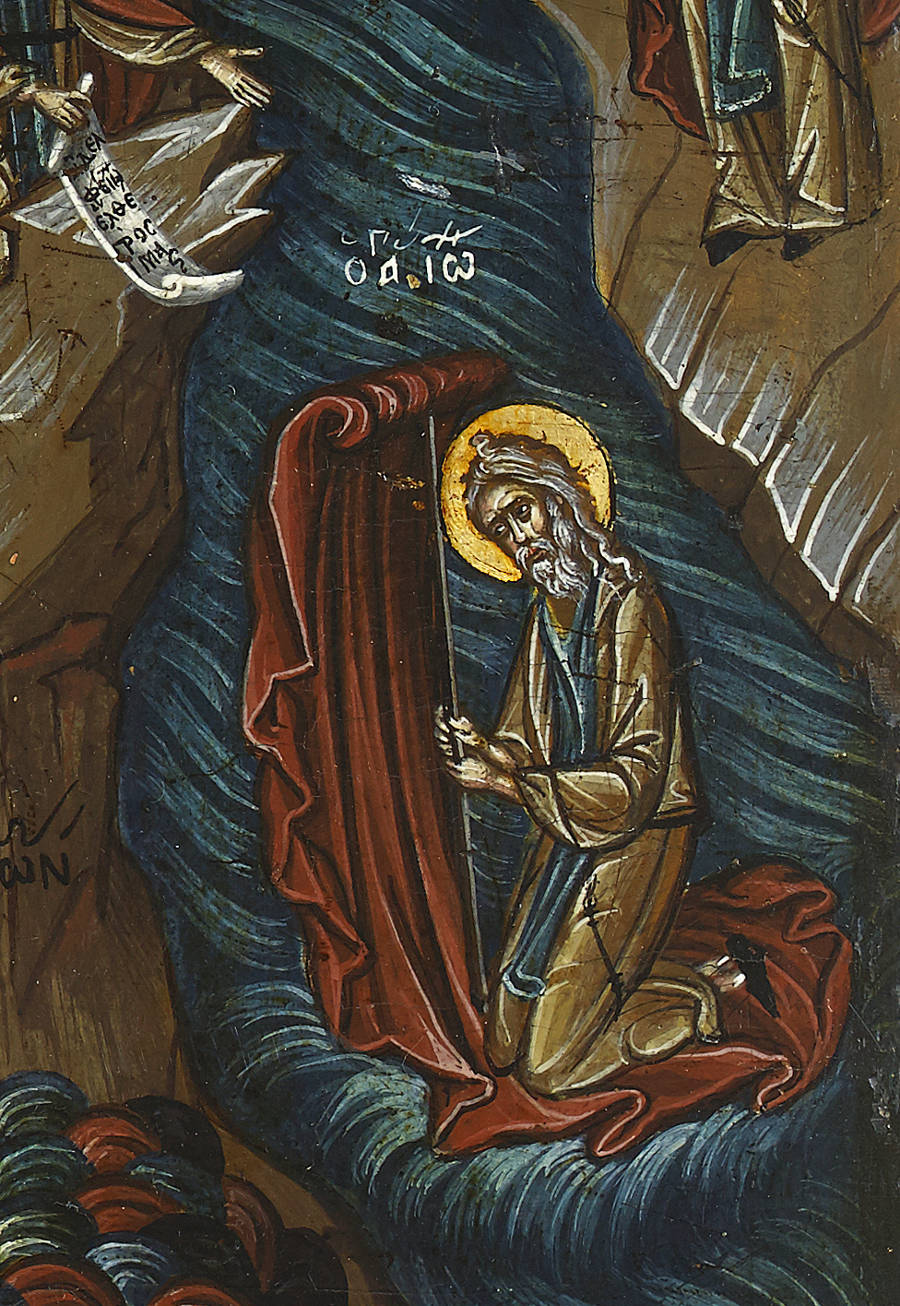
No. 3. Detail. St John’s cloak miraculously becomes a sail
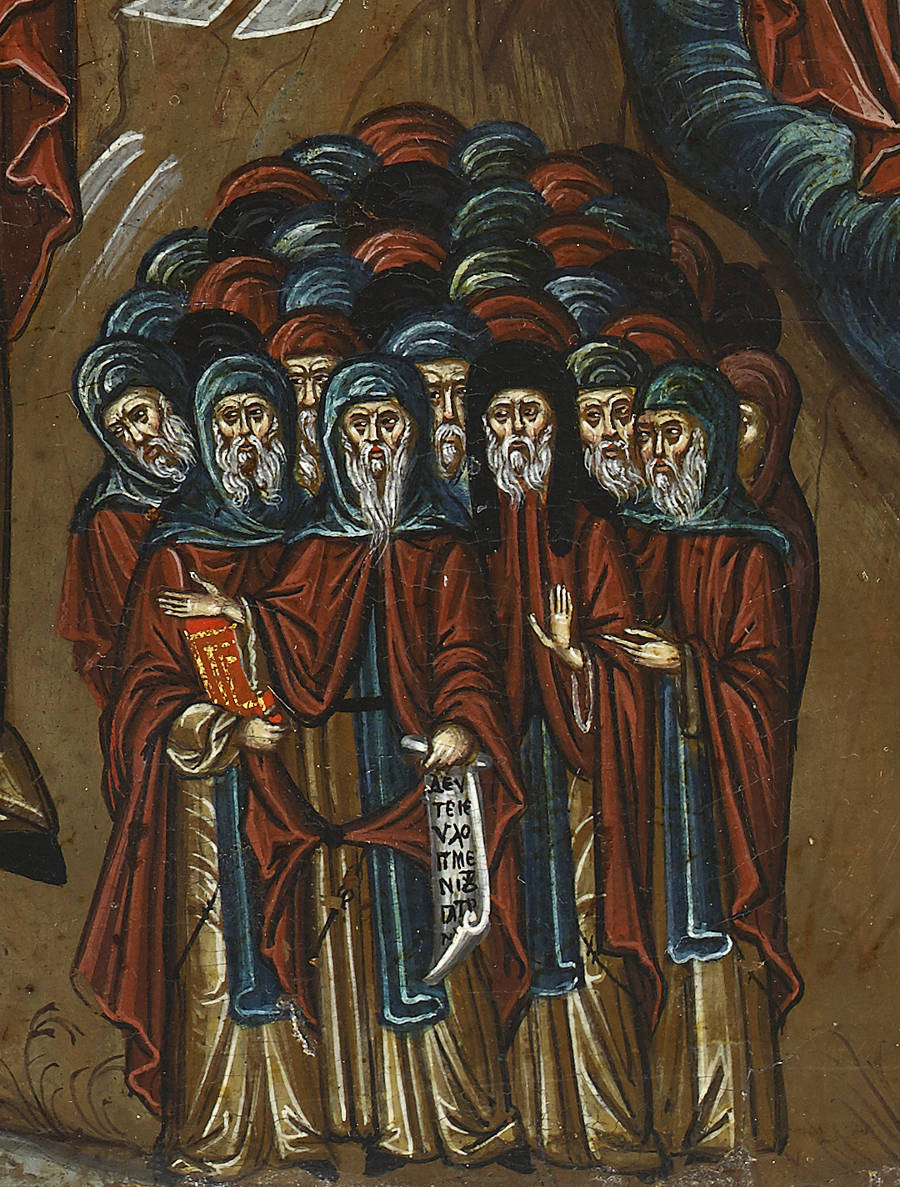
No. 3. Detail. The monastic brotherhood.
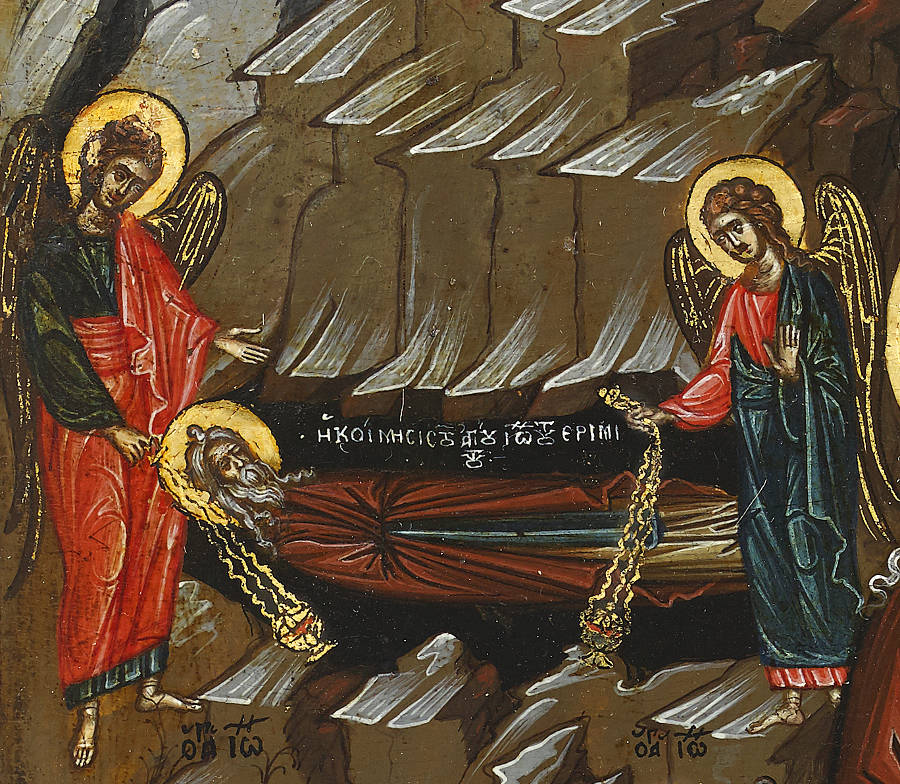
No. 3. Detail. Death of St John the Hermit.
The elongated figure of the saint dominates the vertical centre of the composition while around him the scenes of his story unfold in the rocky mountainous landscape. In the upper right we see the ship which transported John’s companions, a community of ninety-eight monks, to the island of Crete. We see John, who had been left behind, summoned from the shore by one of the brothers, his cloak miraculously turned into a sailing boat. He arrives on Crete where he parts from his companions to live the life of a solitary hermit. At the lower right is the body of the monks shown as a single group. On the left side we see the hunter, mistaking John for game, shooting him with an arrow and, above, the scene where, kneeling before the saint, he throws down his sword and his bow and arrows and begs forgiveness. Further up we see John’s burial attended by angels with censers. At the top an angel carries the hermit’s soul to Heaven.
These supposed events date from the 4th century. According to tradition the Venerable John the Hermit (he is not to be confused with St. John the Hermit, circa 1050-1143 from Burgos in Spain) became an ascetic when he was very young. For some years he was the disciple and spiritual son of St. Pharmutius until he chose to enter into a deeper solitude, living as a hermit with great ascetic discipline. Today the village of Azigores in the mountains near Paleochora in Southern Crete maintains the small chapel dedicated to St John on the site of his supposed hermitage1.
Our icon is one of a small group of which perhaps less than a dozen examples are known. They date from the sixteenth and seventeenth centuries and all are masterworks of the later Cretan School and now in important collections (See figs. 1, 2, 3, 4). It seems there was no popular tradition. The cult of the saint was revived in the late 16th century at the time of the construction of a new monastery at Gouverneto. According to Professor Chatzidakis ‘Only a few examples of this type which are almost identical were painted in this period.’2
Fig. 1. Temple Gallery Z104 (2009) signed Victor, 1604 |
Fig. 2. Monastery of St John the Theologian, Patmos. |
Fig. 3. Byzantine and Christian Museum, Athens |
Fig. 4. Jeremiah Palladas. Byzantine Museum of Corfu |
An infra-red scan of the back of the panel revealed a handwritten inscription, illegible to the naked eye, which probably dates from the late nineteenth or early twentieth century. It is a hymn (apolytikion) which is sung for various saints during Orthodox Church services: 1. 2. (first two lines unreadable) 3. Τῆς ἑρήμου πολίτης καὶ ἐν σώματι ἄγγελος καὶ θαυ 4. ματουργὸς ἀνεδείχθης [θεοφόρε] πατήρ ἡμῶν Ἰωάννη 5. νηστεία, ἀγρυπνία, προσευχὴ οὐράνια χαρίσματα λαβὼν 6. θεραπεύεις τοὺς νοσούντας καὶ τὰς ψυχὰς τῶν πί 7. στει προστρεχόντων σοι. Δόξα [τῷ δεδο]κότι σοι ἰσχὺν 8. δόξα τῷ σὲ στεφανώσαντι, δόξα τῷ ἐνεργοῦντι 9. διὰ σοῦ πᾶσιν ἰάματα 10. Τῆς ἑρήμου ὁ ………. Καὶ ἰατρός μου τῶν 11. Γλυκύτατος ‘…Citizen of the desert and embodied angel, and proved to be miraculous, our father Ioannis who carries God; fast, vigil, prayer, receiver of celestial charisma, you heal the sick and the souls of the faithful who come to you. Glory to the power that was given to you, glory to what was crowned to you, glory to what activates through you and heals’ 3.
Figure 5. Back of Panel
Footnotes:-